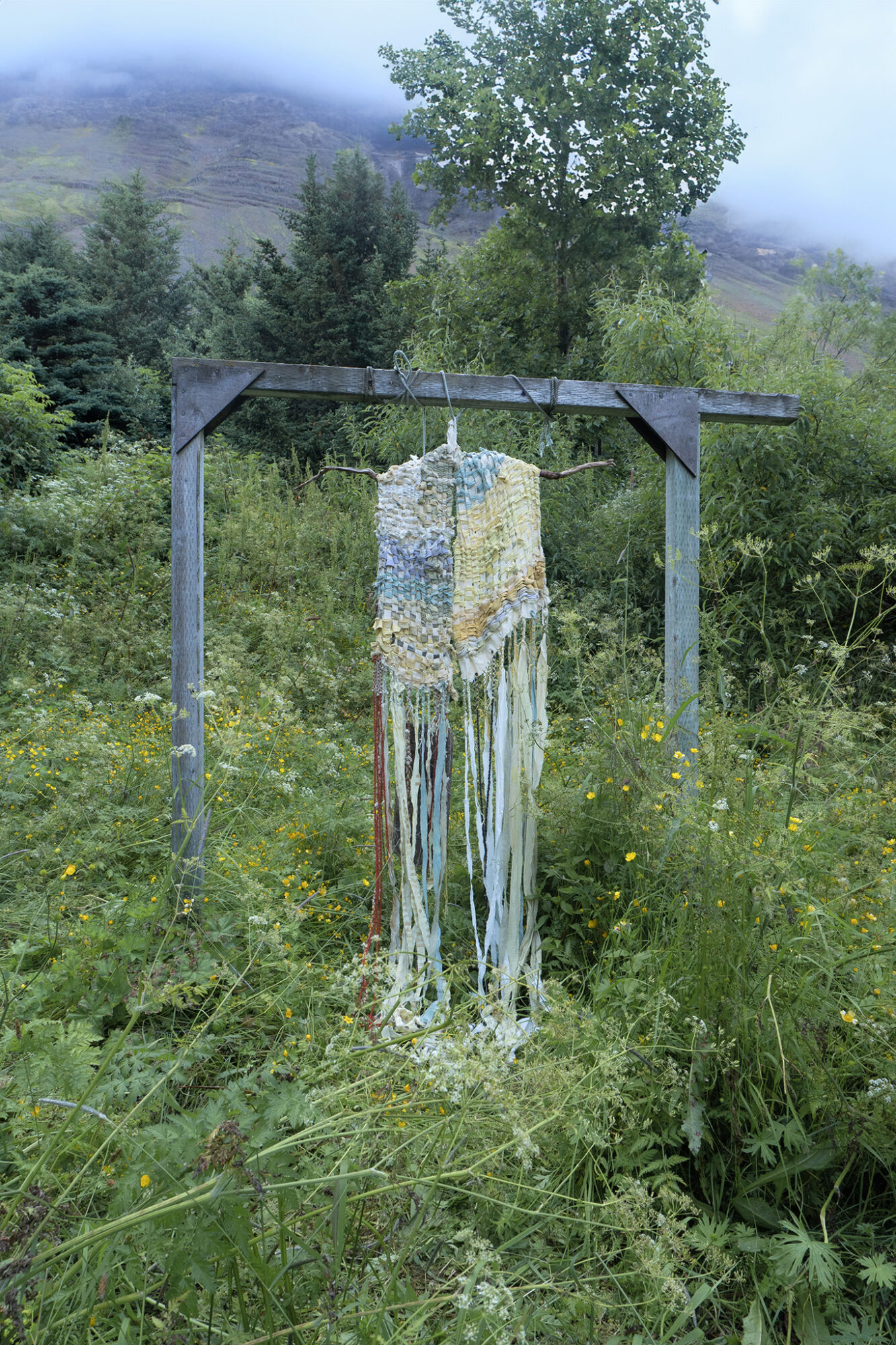Duo Exhibtion with Dunja Krcek
Engi, Ísafjörður (Iceland),
27. July 2023
Rivulets, Installation View, 2023, Engi, Ísafjörður (Iceland)
In their joint exhibition Rivulets Veronika and Dunja are telling stories from the many riverbeds and streams which are shaping the fjord’s landscape around Isafjördur. Their different engagements with water as a connecting element will lead from swamps to absorbing mosses, from hydrated flowers to resting your feet in the sea.
Interested in the poetical aspects of the landscape, they both pursue images or imaginations which are noticed through allowing yourself to slow down and entering states of vagueness and fluidity, like stepping on the grounds of wetlands with their uncertain firmness or considering spaces of in-between when interacting with plants.
This work was produced with the financial assistance of the European Union. The views expressed herein can in no way be taken to reflect the official opinion of the European Union.
Veronika Abigail Beringer, Sternenrotz (detail), 2023, cotton thread, silk, silkpaint, iron bacteria pigment and ink
soaking soft and swelling
lying in the grass
slimy white reflections
fallen from the stars
down to earth
swirling the heavy weight
of the liquid fuel
distributing to all receptors
so generous
so patient
thinking of them all
the fluffy white, the raging blue
the dragging green, the rusting red

The site-specific textile sculpture Fair Little Friends refers to the vegetal environment in Isafjördur, especially cushion flowers blooming all over the mountains throughout the summer. These small plants withstand the harsh weather conditions, showing their brightest colors, no matter what. Even though surrounded by various bodies of water (sea, rivers, waterfalls), plants often have a hard time to grow on mountains which suffer from erosion.
As erosion can disrupt natural water flow patterns, which leads to increased water runoff and reduced water retention in the soil, resulting in inadequate water availability for the plants. However, cushion flowers adapted to these conditions. Through their compact way of growing they are creating their own micro climate to minimize water loss and other challenging factors.
Interested in the relational poetical space which opens up whilst interacting with a landscape, and how following intuitional notions and images creates tacit knowledge that helps us to ground and trust ourselves in what we see, hear, taste and smell, I understand water as a gateway for interaction and communication with the plants, as it connects and runs through human as vegetal bodies. Water is the carrier medium for potential narratives floating around when getting to know each other. It allows me to build a friendship with these plants along the way.
In creating a fluid space for correspondence with the cushion flowers through breathing, drinking herb teas and repeatedly extracting plant pigments into liquids to then again let fibres absorb the liquid substance, the process of making the sculpture becomes an interplay of moistured and dry states, creating loopholes for prefixed thinking patterns and anthropocentric definitions regarding the term nature.
The work is made out of interwoven plant-dyed textiles, strings from dried out dandelion stems, dried flowers and wool. Displayed outdoors – in the garden of Engi – Fair Little Friends becomes a platform for reciprocal dialogue. Alongside the installation a tea bar made with local foraged plants invites visitors to connect with the flowers even further, entering the space of fluidity.
Veronika Abigail Beringer, Naustahvilt, 2023, glazed stoneware, water, PETG and animation on smartphone, 40 x 23 x 14 cm
The ceramic piece — inspired and named after the folktale „Naustahvilft“ — is an object made out of stoneware, which reminds of a stoup and the form of running liquid. It got a window, which shows an animation on a smartphone of a round figure with legs, taking a foot-bath in a swampy looking landscape. The washbasin part of the object is filled with water.
The story takes place at the mountain crate, which you can constantly see living at Engi. It’s interesting how the troll apparently tried to hurry to get home before sunrise and at the end was so fast, that she decided to take a rest. This image of the resting figure in the mountain resonated very well with Veronika’s project’s subject of wetlands — connecting land and water, wet and dry.
Swamps are being reflected as these (un)productive and “worthless” areas, which can’t be monetised by humans, without being drained. Although the swamp is crucial to our environment for creating fresh water and oxygen, flood control and species richness, it is still considered „worthless“ in a capitalistic point of view.
The piece reflects the swamp as a metaphor for our own (un)productivity. How can periods of being unproductive and rather rest than being active change our practice? Is it a form of rebellion against capitalism not to be productive all the time? Can it even be possible in nature to be inactive — since everything is changing and shifting constantly?
Installation by Dunja Krcek and Veronika Beringer, Rivulets House, 2023, cotton grass, glazed stoneware, plants, shells, candles, glasses with liquids, flower printed fabric
Dunja Krcek, Resting with Cotton Grass, 2023, cotton grass, lady’s mantle, ranunculus, dandelion leaves
Dunja Krcek, Hydrated Dandelion Desire, 2023, dried and woven dandelion stems, cotton-fiber-stripes dyed with lupins, wool